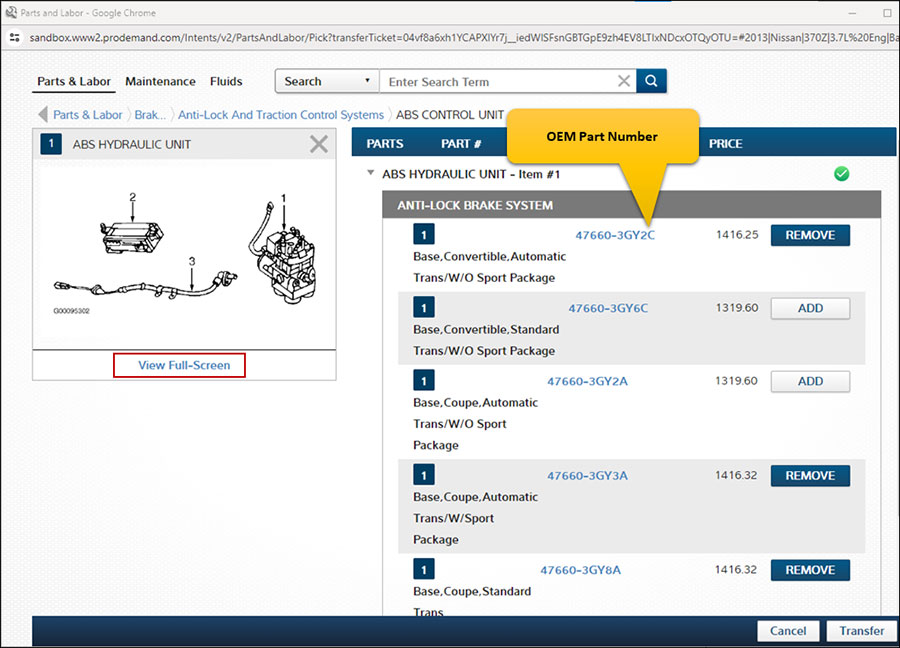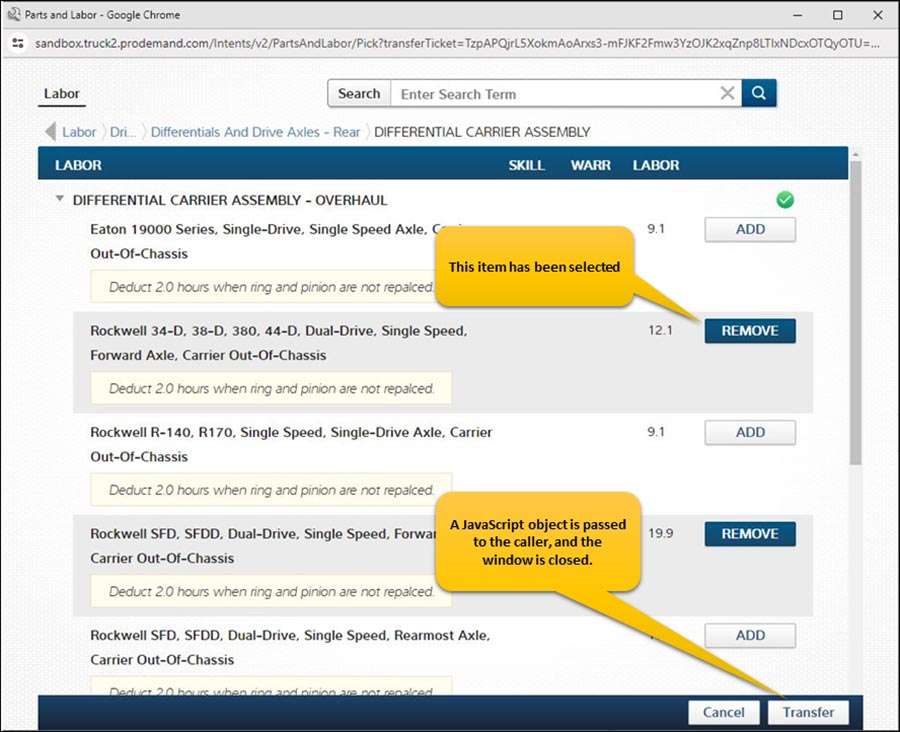Mitchell 1 provides TPMS information to Modern Tire Dealer, an award-winning publication that writes editorial content geared to independent tire dealers. We’re sharing this content in our blog, with a link to the Modern Tire Dealer website where you can read the article in full. The TPMS information in this article may also be accessed in the reset procedures tab in our ProDemand® auto repair information software, along with other important reset procedure data for the selected vehicle
SUBJECT VEHICLES: Chrysler/Jeep Wrangler – 2011-15
RELEARN PROCEDURE? Yes.
SPECIAL TOOLS NEEDED? Yes, the TPM-RKE analyzer, 9936, with the scan tool.
This tire pressure monitoring system (TPMS) on 2011-2015 Chrysler/Jeep Wranglers consists of sensors attached to each wheel through the valve stem mounting hole, a wireless control module (WCM) and a yellow TPMS telltale lamp.
A TPMS sensor is installed in the spare wheel if the vehicle is equipped with a matching full size spare wheel and tire assembly. The receiver circuit for the TPMS system is integrated into the WCM for non-remote start vehicles. For factory installed remote start vehicles, the remote start antenna is external to the WCM. The WCM can also include the remote keyless entry (RKE) receiver, remote start (if equipped), and the sentry key immobilizer (SKIM) receiver.
All four receivers share a number of common components. The WCM decodes the RF signals transmitted by each of the vehicle’s tire pressure sensors. The decoded information is used to determine if “warning” or “fault” conditions exist within the TPMS.
Warning indicators
If the TPMS detects that the tire pressure in any road tire is going low, beyond the low pressure (lamp) ON threshold, the TPMS will continuously illuminate an indicator lamp. If a system fault is detected, the indicator lamp will flash on/off for 75 seconds and then remain on solid.
Once the low tire pressure warning has been illuminated, the tire pressure must be increased to the recommended cold placard pressure in order for the TPMS warning lamp to be turned off. The system will automatically update and the TPMS warning lamp will extinguish once the updated tire pressures have been received. The vehicle may need to be driven for up to 10 minutes above 15 mph (25 km/h) to receive this information.
Reset procedures
NOTE: If a tire pressure sensor has been replaced, the tire pressure sensors must be retrained.
Once the low tire pressure warning has been illuminated, the tire pressure must be increased to the recommended cold placard pressure in order for the TPMS warning lamp to be turned off. The system will automatically update and the TPMS warning lamp will extinguish once the updated tire pressures have been received. The vehicle may need to be driven for up to 10 minutes above 15 mph (25 kph) to receive this information.
Tire pressure sensor retraining
Using a RF signal, each sensor transmits tire pressure data approximately once every minute. Each sensor’s (transmitter) broadcast is uniquely coded so that the TPMS module can monitor the state of each of the sensors on the four rotating road wheels. The TPMS module automatically learns and stores the sensor’s ID while driving after a sensor has been replaced. Perform one of the following to allow the system to learn the new sensor ID:
- Once the vehicle has remained stationary for more than 20 minutes, drive the vehicle for a minimum of 10 minutes while maintaining a continuous speed above 15 mph (24 km/h). During this time, the system will learn the new sensor ID.
- Use the TPM-RKE Analyzer, 9936, with the scan tool to program the WCM/SKREEM with the tire pressure sensor ID.
NOTE: If a sensor cannot be trained, see appropriate manufacturer service information.
Demount/mounting procedures
CAUTION: The tire should be demounted from the wheel using the tire changer manufacturer’s instructions. Use the following information to avoid damage during the demounting/mounting procedures.
CAUTION: The TPMS has been optimized for the original equipment tires and wheels. TPMS pressures have been established for the tire size equipped on the vehicle. Undesirable system operation or sensor damage may result when using replacement equipment that is not of the same size, type or style. Aftermarket wheels can cause sensor damage. Do not use aftermarket tire sealants or balance beads if the vehicle is equipped with TPMS, as damage to the sensors may result.
NOTE: If a tire pressure sensor has been replaced, the tire pressure sensors must be retrained. See “Reset procedures.”
NOTE: Wheels and tires are match-mounted at the factory. Before demounting a tire from its wheel, a reference mark should be placed on the tire at the valve stem location, to ensure that it is remounted in the original position on the wheel. For match-mounting procedures, refer to the appropriate manufacturer service information.
NOTE: Tire pressure may increase from 2 to 6 psi (14 to 41 kPa) during normal driving conditions. Do not reduce this normal pressure build up.
NOTE: If tires require leak-testing, a water test may be used to check for a leak around the sensor, as long as any water at the valve core is removed when the procedure is completed. Water can be expelled from the core area by pushing in on the core for several seconds, allowing escaping air to drive out any moisture.
Re-inflate the tire as necessary. Install the original valve stem cap.
Tire pressure sensor
CAUTION: Although additional sensors operating at 433 MHz are available and are used in other applications, they are not interchangeable. Always make sure the correct sensor is being used and be sure to replace the sensor with the correct part number.
CAUTION: The cap used on this valve stem contains an O-ring seal to prevent contamination and moisture from entering the valve stem. Retain this valve stem cap for reuse. Do not substitute a regular valve stem cap in its place.
CAUTION: Do not attempt to install a tire pressure sensor in an aftermarket wheel. Use tire pressure sensors in original style factory wheels only. If aftermarket wheels are installed, and therefore do not contain tire pressure sensors, the system will not function properly and the driver will be continuously notified of a system malfunction.
CAUTION: Any time a sensor is to be reinstalled in a wheel, a new valve stem assembly (2) must be installed to ensure air tight sealing (see Figure 1).
Removal

1) Remove the tire and wheel assembly from the vehicle.
2) Demount the tire from the wheel following tire changer manufacturer’s instructions while paying special attention to the following to avoid damaging the pressure sensor. When breaking the tire bead loose from the wheel rim, avoid using the bead breaker in the area of the sensor. That includes both front and rear beads of the tire.
- When preparing to demount the tire from the wheel, carefully insert the mounting/demounting tool 280 degrees +/ -10 degrees from the valve stem, then proceed to demount the tire from the wheel. Use this process on both the upper and lower tire beads.






